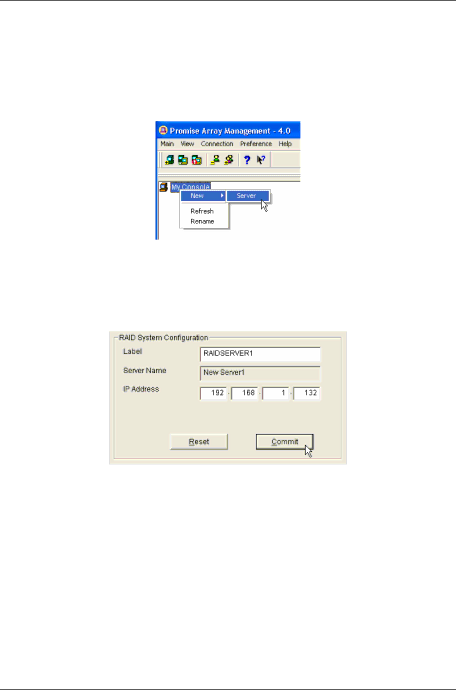
Promise Array Management
Create a RAID Server
The Message Server relays data and commands between the Monitoring Utility on this computer and the Message Agent on the RAID PC. In order for your monitoring PC to communicate with the Message Server, you must create a RAID Server.
Figure 42. Create a New Server.
1.The first time you run Remote PAM, ![]() icon and select New > Server from the popup menu. Or click the New Server
icon and select New > Server from the popup menu. Or click the New Server ![]() icon in the Toolbar. A RAID Server icon appears.
icon in the Toolbar. A RAID Server icon appears.
Figure 43. Input the Server's IP address.
2.Click on the RAID Server ![]() icon. In Information View (above) type in the IP address of the computer where the Message Server software is installed.
icon. In Information View (above) type in the IP address of the computer where the Message Server software is installed.
If the Message Server software is installed on the monitoring PC, you can use the default 127.0.0.1 IP address.
3.Click Commit. A list of networked RAID PCs appears as shown in Figure 43, above.
46